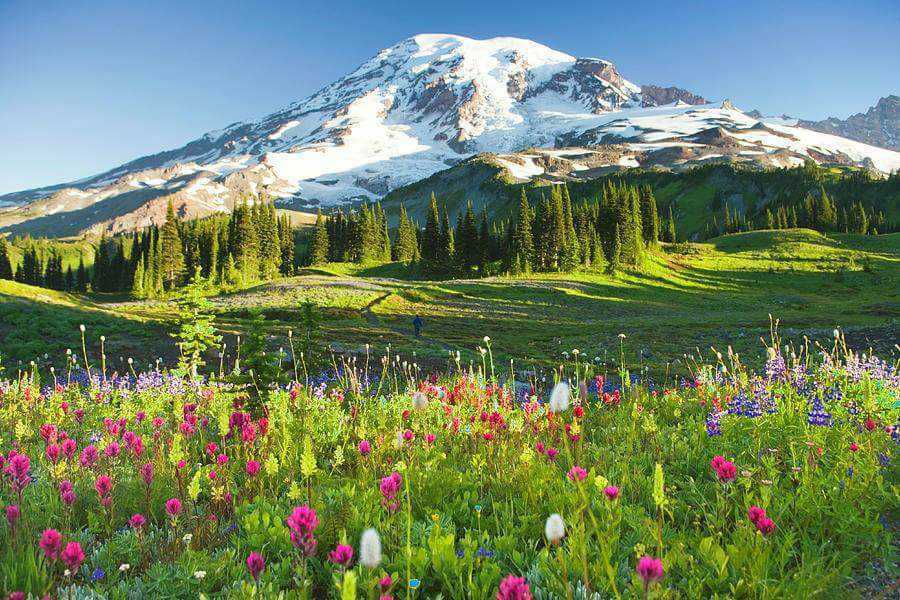
By Alanna Jonson, Community Advocate, Nature First Photography Alliance
One of the most iconic visions of the Pacific Northwest is a field full of flowers under the shadow of Mount Rainier. For generations, images like this have inspired so many to get out and hit the trails. However, as more people set out on the trails, there is a growing demand to capture the perfect shot despite the possible impacts.
As we reach the edge of trails in hopes of finding the ideal location, we can sometimes forget to keep ourselves in check. This desire for unique content, in combination with the current need for social distancing, can leave vegetation at risk of being trampled. When debating if you want to take that step off the trail, remember that trails are designed to give you the best possible view while maintaining the ecological integrity of the site. Just because there isn’t a bloom on a plant doesn’t mean it is immune to heavy feet and frequent disturbances. In order to make sure that we all can enjoy the beautiful scenery, it is important to stay on the trail.
So what can we do to get the perfect shot without disturbing the vegetation? Here are 5 tips to getting the perfect wildflower shot while protecting nature:
Come prepared

Know the risks and bring outdoor recreation essentials. This includes clothing for hot or inclement weather, hand sanitizer, and a fabric face covering to help protect everyone who is out that day.
If you can, pick an overcast day

It is difficult to find the “perfect day”. Hitting the trails on a slightly overcast day can help diffuse the light, giving wildflowers a more even appearance and avoiding unwanted shadows.
Be aware of your shutter speed

Unfortunately, with clouds sometimes comes winds. To prevent blurry or unclear photos, make sure you have set a slightly faster shutter speed than you would with a normal portrait.
Adjust your depth of field

Try different apertures. If you are shooting an individual flower or the entire landscape with a primary focus on the wildflowers it can be helpful to try a few angles and adjust your aperture for a different perspective.
Put nature before photography

The Nature First Photography Alliance has laid out 7 principles to help you engage in responsible photography. These principles were designed to help guide photographers, as a tool to help improve their practice and preserve nature.
Wildflowers can bring so much joy to our lives. As photographers, we want to share our passion and experiences with others. But we also have the responsibility to learn from our past mistakes and commit to protecting nature for others to experience in person, rather than just a picture. By practicing these five tips, you can capture a timeless photo that brings joy even after you leave the trail. Together let's use our photography to inspire community, conservation, and a general love of nature.
Mount Rainier picture credit: Darlene Stewart of Darlene Stewart Photography & Photography examples picture credit: Alanna Jonson